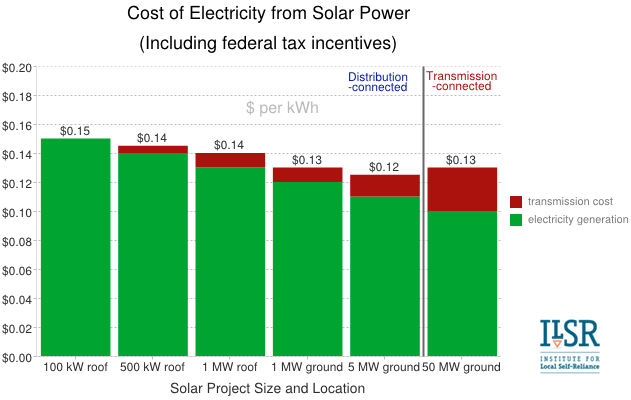Update 3/27/12: added clarification to text and chart that prices include federal tax incentives
If the cost of electricity were the only factor in energy discussions, we’d probably have a lot more coal and a lot less renewable energy. But the truth is that renewable energy can compete on cost and distributed renewable energy has a lot more value beyond just electricity, as illustrated in this one facet in this brief examination by the Clean Coalition.
In their analysis, the Clean Coalition focused on two elements: the cost to produce electricity (with federal incentives) from solar facilities of various sizes and the cost to deliver that power (via the distribution or transmission system). As it turns out, fees to access the transmission system and transmission losses can offset any economies of scale from central station power generation.
The chart (original here) below illustrates the “sweet spot” balance between economies of scale and costs for transmission.
Of course, there’s more to the value of distributed renewable energy than just cost to generate and transmission access, whether it’s the economic multiplier from potential local ownership or the political value of community-based generation. But it’s good to know that even in this narrow view, distributed generation can compete with large-scale power generation.





